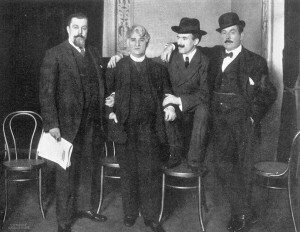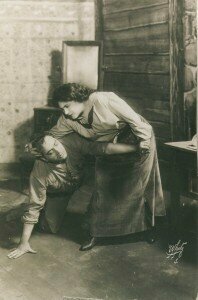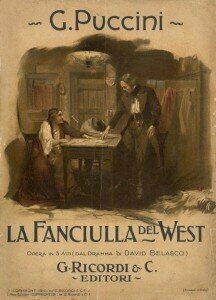
Gatti-Casazza, Belasco, Toscanini, and Puccini, year 1910

Enrico Caruso and Emmy Destinn
 Puccini’s Fanciulla premiered on 10 December 1910 at the Metropolitan Opera in New York City. The character of “Dick Johnson” was sung by the legendary tenor Enrico Caruso, and “Minnie” by Emmy Destinn. Arturo Toscanini conducted, and the work was an immediate popular and critical success. “My heart was beating like the double basses in the card scene,” Puccini told The New York Times after the premiere. It certainly was the first world premiere of an opera at the Met, but it failed to gain significant traction in Europe. It was seen as a “botched experiment in being modern that pleased nobody, and failed to fulfill the criteria for a genuinely Italian opera.” A good many commentators suggested that Puccini’s music represented a debasement and cheapening of pure Italian values. And his considerable fame abroad was seen as proof that the composer had “willfully sacrificed national character for cheap commercial exploitation.”
Puccini’s Fanciulla premiered on 10 December 1910 at the Metropolitan Opera in New York City. The character of “Dick Johnson” was sung by the legendary tenor Enrico Caruso, and “Minnie” by Emmy Destinn. Arturo Toscanini conducted, and the work was an immediate popular and critical success. “My heart was beating like the double basses in the card scene,” Puccini told The New York Times after the premiere. It certainly was the first world premiere of an opera at the Met, but it failed to gain significant traction in Europe. It was seen as a “botched experiment in being modern that pleased nobody, and failed to fulfill the criteria for a genuinely Italian opera.” A good many commentators suggested that Puccini’s music represented a debasement and cheapening of pure Italian values. And his considerable fame abroad was seen as proof that the composer had “willfully sacrificed national character for cheap commercial exploitation.” Giacomo Puccini: La Fanciulla del West
